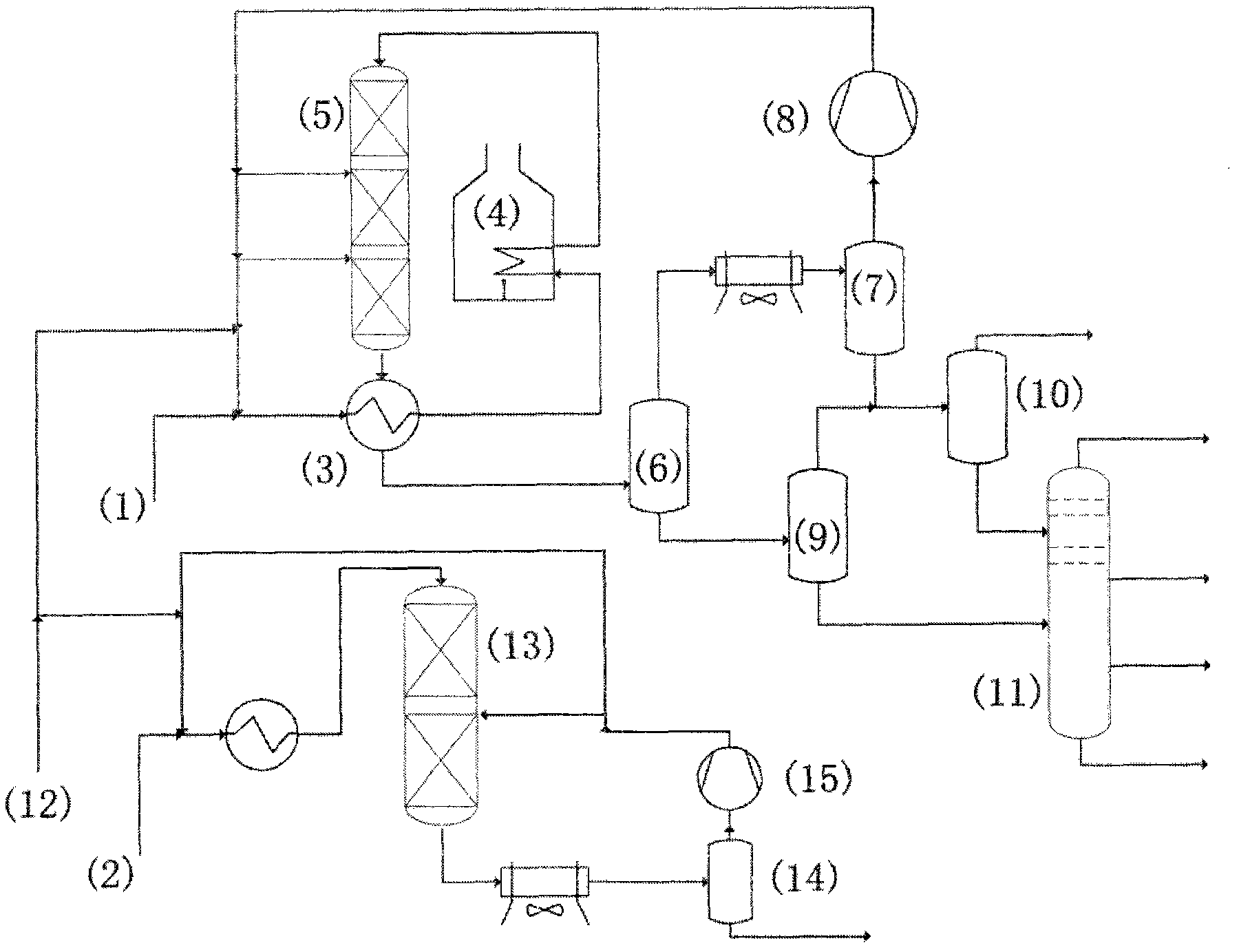Technology for producing naphtha or motor gasoline through flexible hydrogenation of Fischer-Tropsch synthesis oil
A technology for Fischer-Tropsch synthetic oil and motor gasoline, which is applied in the field of oil hydrogenation process, can solve the problems of sacrificing market competitiveness, etc., and achieve the effects of energy saving, lower fuel consumption, and lower temperature.
- Summary
- Abstract
- Description
- Claims
- Application Information
AI Technical Summary
Problems solved by technology
Method used
Image
Examples
Embodiment Construction
[0037] exist figure 1In the process, heavy distillate oil and wax (1) from Fischer-Tropsch synthesis are first mixed with low-temperature oil-washed naphtha (2), then mixed with mixed hydrogen, and passed through the reaction feed / reaction effluent heat exchanger of the refining unit ( 3) Preheating, and then heated to the reaction temperature required by hydrofinishing through the heating furnace (4) and enters the hydrofinishing reactor (5), where reactions such as hydrogenation saturation of olefins and hydrodeoxygenation of oxygenates occur on the reactor bed , the inlet temperature of the lower bed is controlled by cold hydrogen between the beds. The reaction effluent is initially cooled by the heat exchanger (3) and then enters the hot high-pressure separator (6) of the refining unit. The hot high-pressure separator (6) liquid phase enters the hot low-pressure separator (9), the gas phase enters the cold high-pressure separator (7) after being cooled by the air cooler, ...
PUM
 Login to View More
Login to View More Abstract
Description
Claims
Application Information
 Login to View More
Login to View More - R&D
- Intellectual Property
- Life Sciences
- Materials
- Tech Scout
- Unparalleled Data Quality
- Higher Quality Content
- 60% Fewer Hallucinations
Browse by: Latest US Patents, China's latest patents, Technical Efficacy Thesaurus, Application Domain, Technology Topic, Popular Technical Reports.
© 2025 PatSnap. All rights reserved.Legal|Privacy policy|Modern Slavery Act Transparency Statement|Sitemap|About US| Contact US: help@patsnap.com


